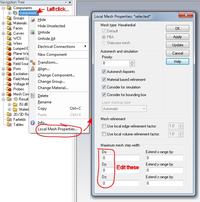djjoza
Newbie level 6
hi everyone
i'm need to simulate a PIN diode in CST Microwave studio with both OFF and ON states and it needs to be reprensated as a lumped element with RLC values. I need those values to be accurate so the PIN diode model would be more realistic and the simulation more precise. I'm modeling an reconfigurabile patch antenna with an inset in which the diode would be mounted. So, basically, what i need is the values of R,L and C for the ON and the OFF state or/and some literature in which i can find those.
Thank you very much in advance..
i'm need to simulate a PIN diode in CST Microwave studio with both OFF and ON states and it needs to be reprensated as a lumped element with RLC values. I need those values to be accurate so the PIN diode model would be more realistic and the simulation more precise. I'm modeling an reconfigurabile patch antenna with an inset in which the diode would be mounted. So, basically, what i need is the values of R,L and C for the ON and the OFF state or/and some literature in which i can find those.
Thank you very much in advance..


